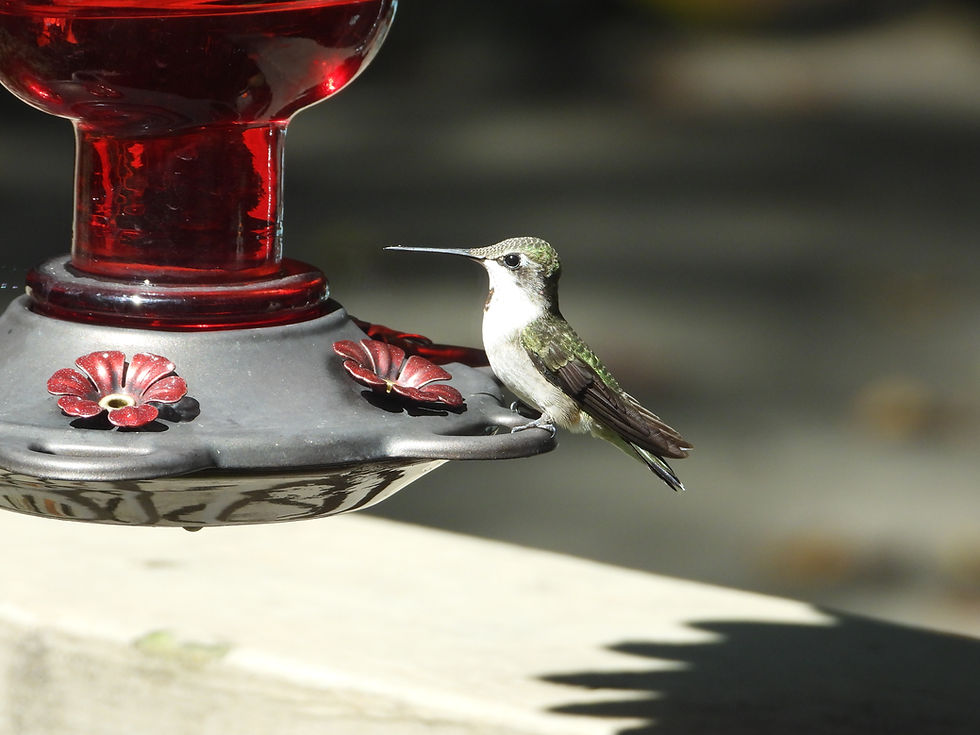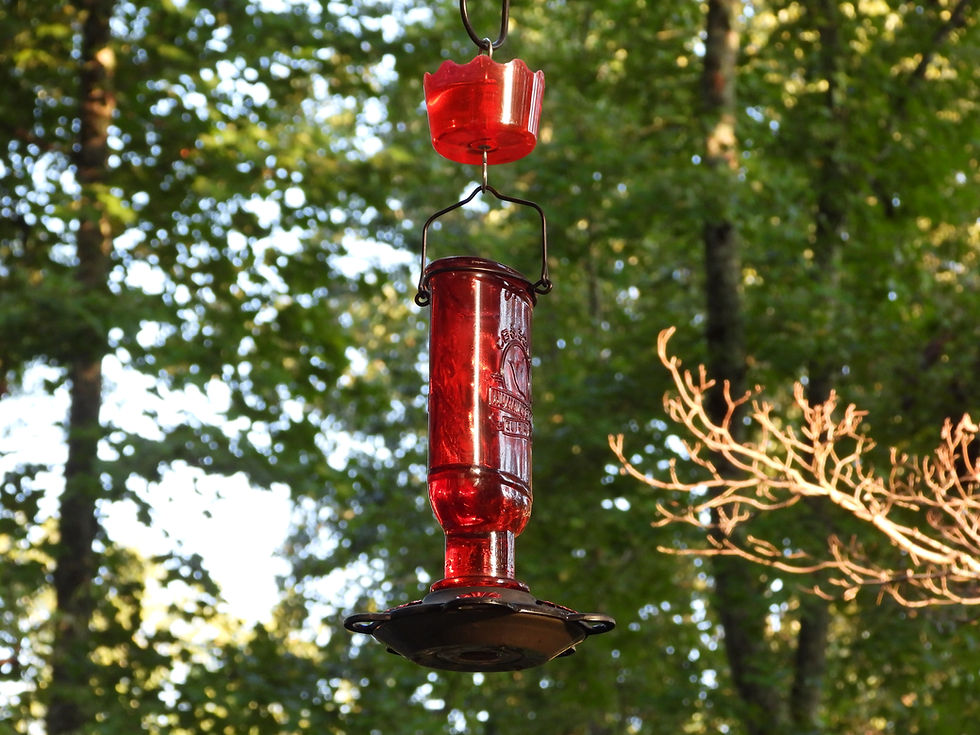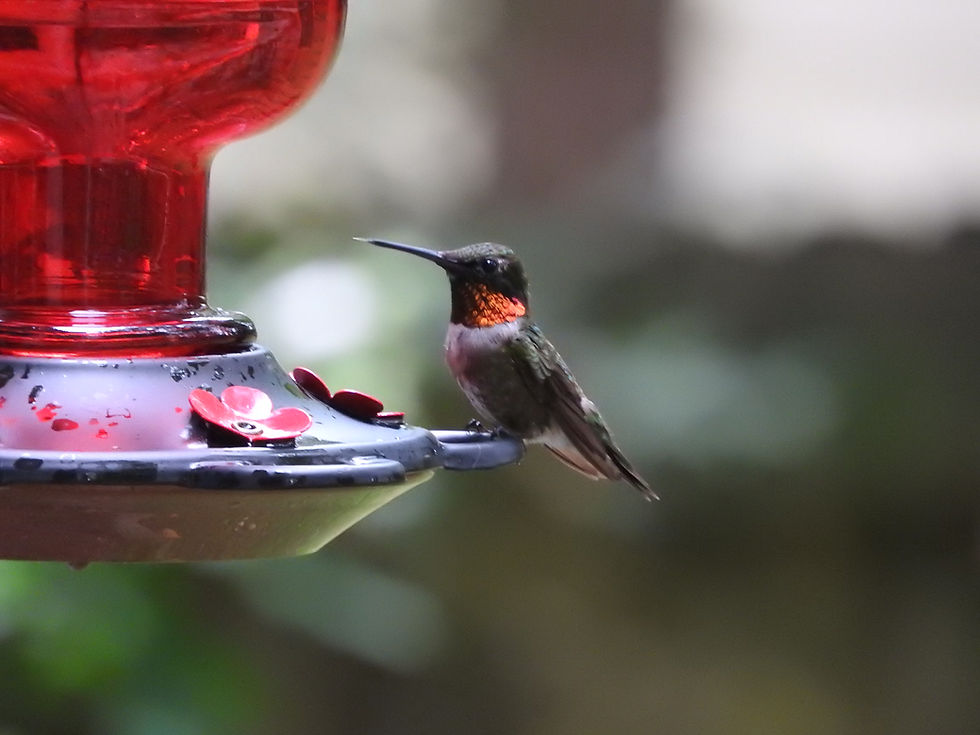In this blog we explore which feeder attracts the most hummingbirds: We have found that there isn't a single feeder that matters. It is more important that the feeder is cleaned and filled often!
Googlers want to know: Which feeder attracts the most hummingbirds? Our preference is a red glass feeder with colorful fake flower blossoms (They seem to prefer either red or yellow, but also will drink from other bright colored blossoms as well). We are located in the Southeastern United States, and aside from a few (very few) migratory hummingbirds, there is only one species that resides here: The Ruby-Throated Hummingbird.

Here is some additional information about Ruby-throated Hummingbirds and the feeders that work for well for attracting them and supporting their nutritional needs as they prepare for migration.

In most of the Southeastern United States, you’ll only see Ruby-Throated Hummingbirds throughout the Spring and Summer months, and they will depart in early Fall. The female is typically slightly larger and nearly all white/grey on the belly and throat. The adult males are a bit smaller but their throats absolutely glow red in the sunlight. Other times they may appear black, as they attempt to blend into the surroundings or perch in the shadows. Juveniles will look similar to females at first, and may only have 1 ruby-red feather or just a handful of them. They are a TON of fun to watch as they buzz between feeders and chase each other around relentlessly.
Here’s the thing: Ruby-throated hummingbirds are extremely territorial. In all the years I’ve been feeding them I’ve rarely seen more than one at a time on a feeder. This usually only happens if there are too few feeders in the area and a lot of birds, and they are nearing their departure date for migration. For this reason, you can use a hummingbird with as few as 4 “blossoms” but more than that is really a waste. They will attack / chase each other so quickly that it’s pretty uncommon to see two sitting together sharing a drink. If you are in the area and you’d like to stop by the pollinator garden at Kemp Park, you’ll likely witness the hummers buzzing each other for the next few weeks! They are located at 4331 Burnt Hickory Rd NW Marietta GA, 30064 – or you can visit their website.

I still recommend a feeder with 4 blossoms (or more), over just a single blossom because it does give the other birds a chance at grabbing a drink, before being chased away. Also, they will come at it from every side, and from below (in our case we have 4-foot tall purple salvia in the summer) as well as above. So it’s a great idea to have multiple angles. Now, another thing to consider is that many hummingbirds actually prefer to perch. They are the only species of birds that cannot walk, their feet are only designed to perch. So they will do this, and lean into the plastic/metal blossoms on your feeders and take deep rewarding drinks. So try to get feeders with perches for each of the blossoms.

Red-dye or red glass? We prefer either the red colored glass, or a base that is red and the glass that is clear. You do still want to be able to see the level (and condition) of the hummingbird nectar inside of the feeder so I’d avoid getting a solid color or ceramic that you cannot see through. We talked about red dye / store bought nectar in another post… it’s so easy and fast to mix up a batch of hummingbird nectar that you should avoid the red stuff 100% of the time.

(Hummingbird nectar DIY recipe: 1 part sugar, 4 parts water. Lightly boil and then chill to serve). The Feeder we have been using for that last few years looks similar to this one from Perky Pet. It is durable, easy to clean and refill, and the color stays bright. Direct Link Here.
Are there any accessories that I should purchase to go along with my hummingbird feeder? Absolutely. You should consider how you will be hanging the feeder(s), and whether or not raccoons can get to them. Raccoons simply love them and will grab hold and tilt them over drinking every last drop (that doesn’t spill). So I’d recommend hanging them from a piece of soffit or facia with at least a 12″ long hook, so they cannot reach down to it.

Additionally, you’ll want to invest in an “Ant trap” or ant guard. You and I both know how quickly ants will find anything sweet here in the South. So these little ant traps are worth their weight in gold. You just fill them with water (only a small amount), and it creates a protective barrier that the ants cannot cross and it keeps your nectar safe. Additionally, these little ant traps will double as a tiny bird watering hole for other small birds like finches, titmice and chickadees. We’ve even seen downy woodpeckers and nuthatches drinking from ours, so be sure to keep them clean!

Kommentit